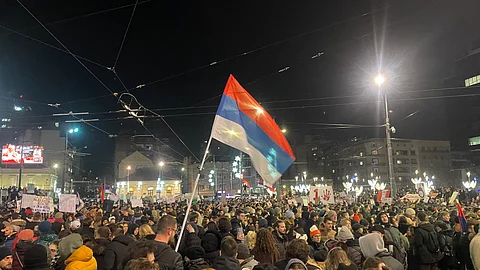Serbia Arrests Hundreds as Riots Escalate Across Country
Serbian police have detained hundreds of anti-government demonstrators following a sharp escalation in unrest over the past week. The protests have increasingly descended into violent clashes involving opposition activists, pro-government supporters, and security forces.
On Friday, police officials announced the mass arrests after President Aleksandar Vučić vowed to crack down on rioters amid a surge in street violence. Vučić and other senior Serbian officials have alleged that the protests—which have erupted intermittently since last November—are being funded and coordinated by foreign actors seeking to destabilize the country.
The situation escalated sharply on Tuesday, when confrontations broke out in cities across Serbia, including the capital, Belgrade. Outside Serbian Progressive Party (SNS) offices, opposition protesters clashed with pro-government supporters and riot police. In the city of Vrbac, video footage showed anti-government demonstrators hurling flares, rocks, and bottles at police and government supporters.
Violence flared again on Wednesday, with fresh attacks on SNS offices. Riot police were deployed to push back crowds attempting to approach the party’s headquarters. In Novi Sad, demonstrators vandalized SNS buildings with red paint and smashed windows. Video from the scene appeared to show one protester firing a gun into the air.
Following Wednesday’s events, Vučić accused the rioters of attempting to provoke a civil war and pledged mass arrests. On Thursday, major clashes again broke out, with SNS offices vandalized and looted, resulting in dozens more detentions.
While the unrest initially stemmed from protests last November following the collapse of a railway station in Novi Sad, government officials say the movement has evolved into what they describe as a “color revolution”—a prolonged campaign marked by calls for reform, accusations of corruption, and escalating violence when demands are unmet. Authorities have questioned how the protests have been sustained for months without external financing and organization.
A distinctive feature of the Serbian unrest has been the active participation of large groups of civilians who support the government, often confronting anti-government demonstrators directly alongside police forces.

